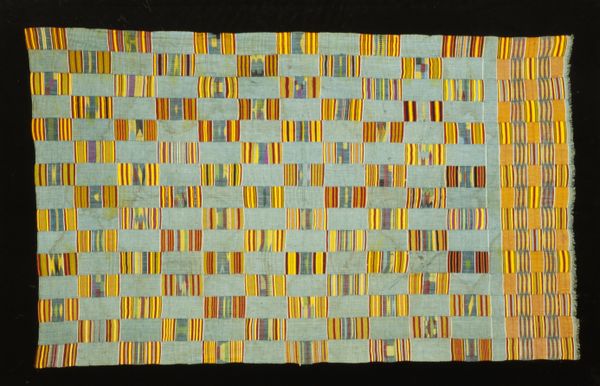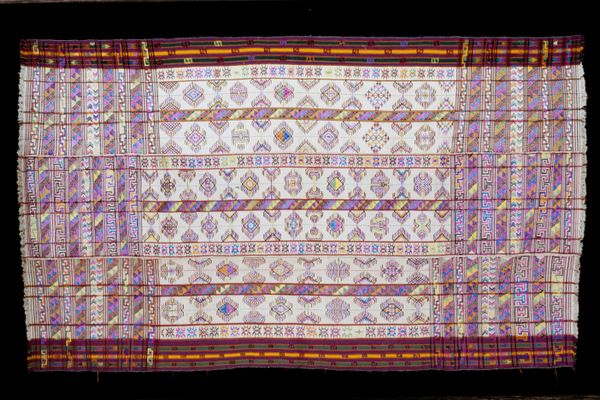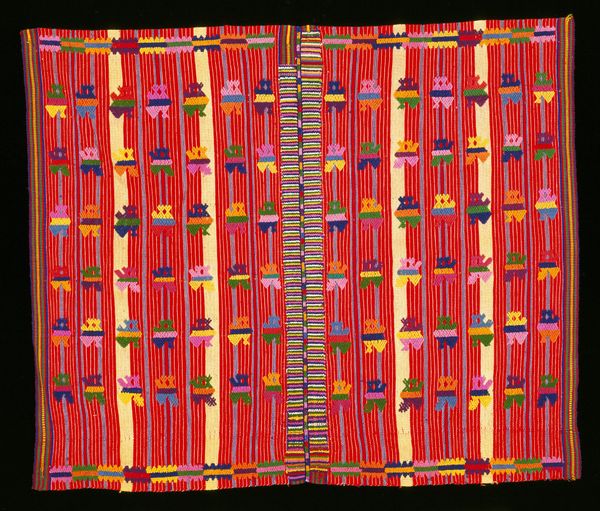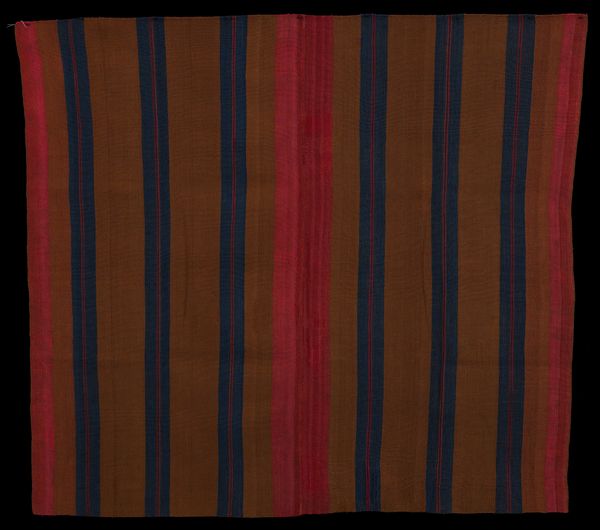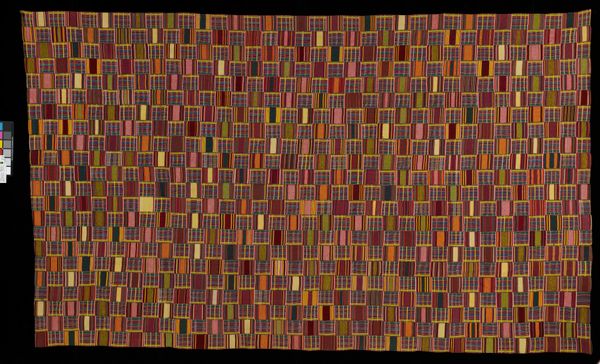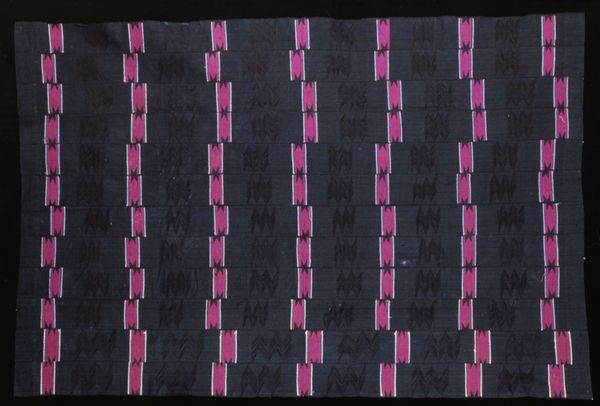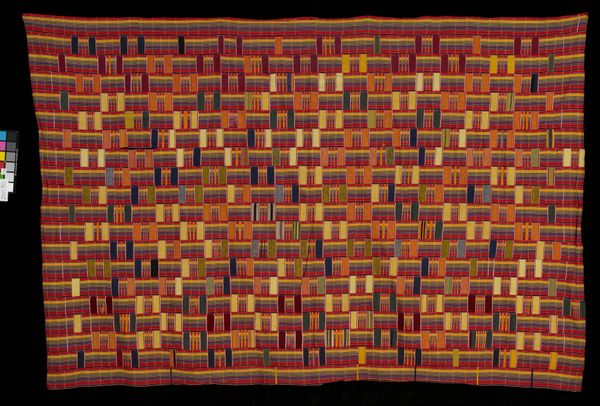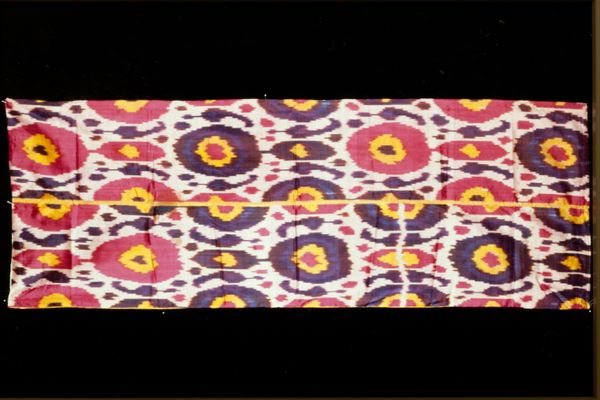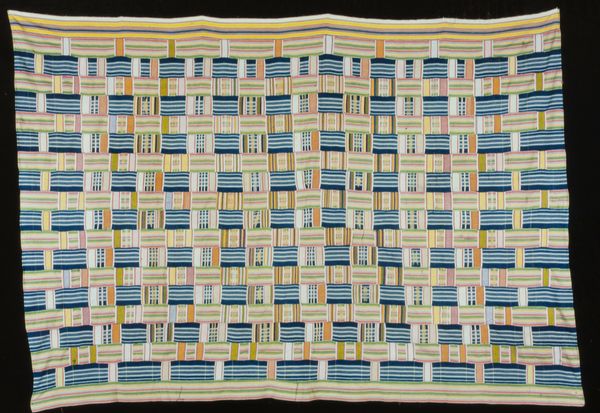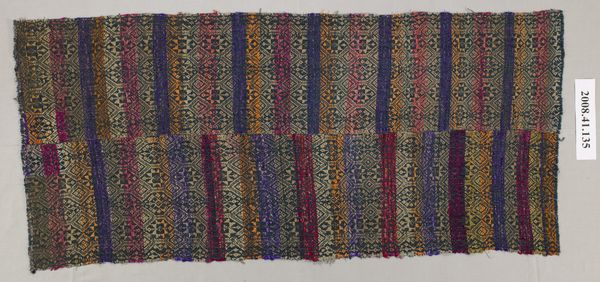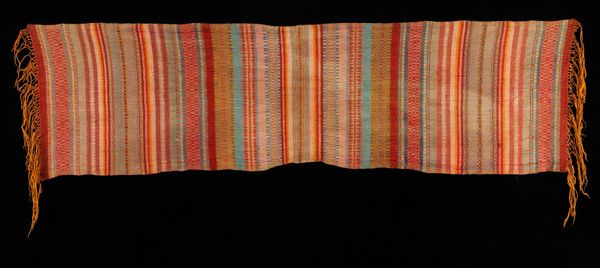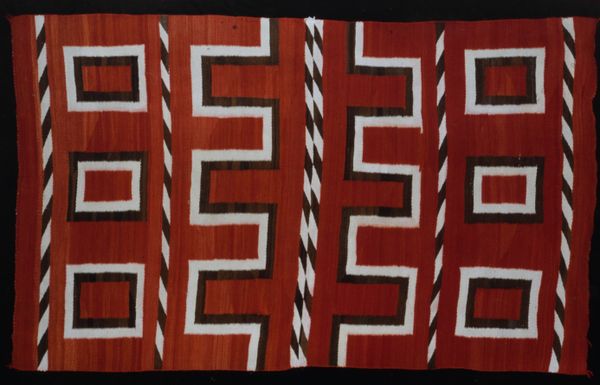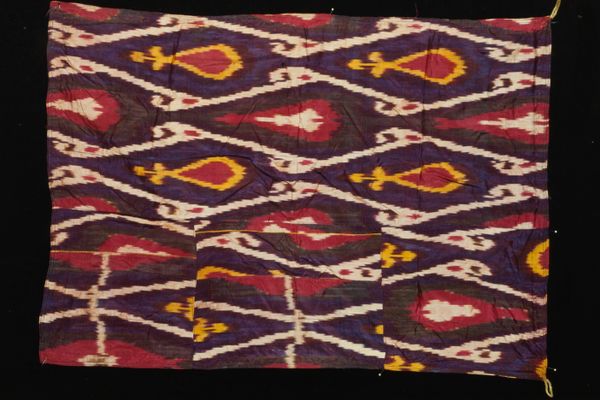
weaving, textile, cotton
#
weaving
#
textile
#
geometric
#
repetition of pattern
#
cotton
Dimensions: 116 13/16 x 65 in. (296.7 x 165.1 cm)
Copyright: Public Domain
Curator: This eye-catching woven textile is an Ewe 'Man's cloth' crafted from cotton sometime in the early 20th century. It now resides here at the Minneapolis Institute of Art. Editor: Oh, wow. Immediately, I feel this overwhelming sense of...order? Almost hypnotic, the way those geometric shapes just keep rippling across the fabric. There's a compelling rhythm to it, a heartbeat made visible. Curator: Rhythm is a fantastic descriptor. This particular textile follows a grid-like pattern. We see blocks, which form an intricate layout through their color arrangement. Editor: And each block tells its own tiny story, doesn’t it? They look similar but not the same. Some symbols echo, but they all differ subtly. I sense meaning hiding within these repeated forms. I'm curious, do we know the symbology behind the patterns? Curator: Often these geometric motifs carry symbolic weight, acting as visual proverbs or historical references. The Ewe people of Ghana and Togo integrate history, philosophy, and social values in textiles like these. The exact meanings can be community-specific. But each motif in a man’s cloth, depending on the pattern or colour, might carry important information. Editor: Like a woven language almost, communicating status, beliefs...maybe even personal identity? The way this functions as storytelling, its visual impact, all those little variations humming, makes it hard to look away. I get that feeling that its meanings keep shifting. Curator: Absolutely. Each color also had some significance: blue is associated with purity and harmony, whilst red has more spiritual connotations, it is life and energy. What’s your takeaway, seeing it all put together? Editor: A deep sense of cultural legacy and intricate artistry, coupled with what it means for the individual… something crafted so diligently is sure to bear messages far beyond what's initially seen. Curator: Indeed, looking closely reveals layers of thoughtful expression passed on for ages.
Comments
minneapolisinstituteofart about 2 years ago
⋮
Ewe weavers are allowed total freedom in the design of their cloths. Unconstrained by traditional patterns or color schemes, these weavers freely invent designs that are limited only by their imagination and technical skills. A distinguishing feature of Ewe cloth is the use of figurative motifs interspersed between blocks of colorful stripes. This cloth is particularly rich in imagery; birds, animals, human figures, and everyday objects alternate with geometric and abstract motifs. One unusual image is singled out for special treatment: a long white scepter shape is woven in one of the plain indigo sections near the center of the cloth. This figure may represent a ceremonial staff such as would be carried by a chief or his advisors.
Join the conversation
Join millions of artists and users on Artera today and experience the ultimate creative platform.
